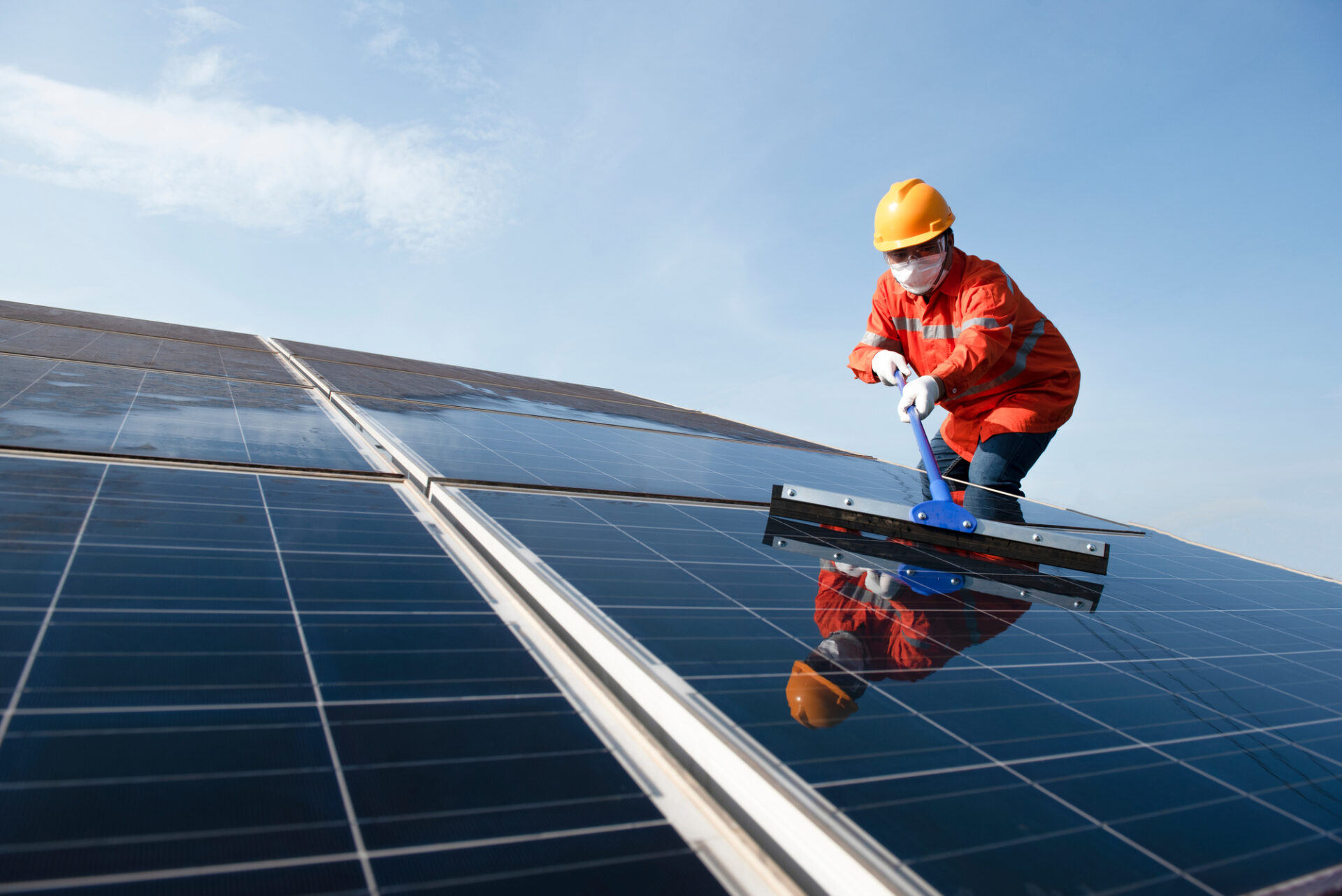Solar energy has been and continues to be one of the most favorable alternatives to electricity, with its use growing drastically globally. It is the 3rd largest source of electricity behind wind and hydropower.
For example, according to a report by Ecowatch, around 2.8% of electricity in the United States is powered by solar energy. In addition, solar makes up 13.5 % of electricity generated by renewable energy.
All these show that opening and running a solar power company is proving to be lucrative.
However, so many solar businesses are cropping up, making it difficult for your company to stand out. If this is your situation, you’d likely benefit from specialized solar marketing from experts like Smart Solar Marketing. These professionals have vast experience in helping solar companies build their brands.
In the meantime, homeowners may be wondering what a solar panel home installation involves. What are its benefits, costs, and maintenance needs? Keep reading to learn more.

Asian technicians cleaning solar panels, technicians wearing masks to protect against germs.
Table of Contents
How To Install A Residential Solar Panel
Installing solar panels can seem daunting, but it’s not as difficult as it seems. You can follow these steps to accomplish a basic setup.
Set Up Scaffolding
First, erect scaffolding to ensure your safety throughout the whole process. Mounting a photovoltaic panel can be risky, especially if you’re trying a DIY (do-it-yourself). This support system can act as your installation platform instead of standing on the roof directly or using ladders, which can be dangerous.
Mount And Solar Panel Installation
The mounting system is usually used to support and secure the solar panels.
Place your mounts either on the roof or the ground depending on where you want your setup to be. If you place your cell on the roof, attach the mount to the surface and ensure it’s set at the ideal angles for maximum sun exposure. For ground installation, level the ground by removing rocks, roots, or anything that can interfere with the spread of light.
The angle of the mounting structure should be slightly tilted to capture enough sunlight to produce optimal energy. The north is the best direction to place mounts for countries in the southern hemisphere. Meanwhile, south, east, and west are preferable directions for countries in the northern hemisphere.
Once set, place the solar panels on the mounting system by attaching the brackets. Then, tighten the nuts and bolts to ensure the structure is stable.
Place The Wiring
This involves running wires from the solar collectors to the battery. Universal connectors such as MC4 are preferable since they can be used for all types of solar panels.
Cells can be connected using either series or parallel connections.
A series connection entails wiring the positive (+) wire to a different module’s negative (-) to increase the voltage match with a battery bank. Meanwhile, parallel connection involves wiring positive to positive and negative to negative.
Install The Solar Inverter And Battery
Connect the solar inverter to the system and ensure it is near the main panel. Then, mount it on a wall or a flat surface.
If the inverter is inside, keep it away from the sun in a cool and well-ventilated place.
Next, connect the inverter and solar battery. Place the battery’s positive terminal on the positive terminal of the inverter, then do the same with the negatives.
Lastly, connect the inverter to the consumer unit to channel the collected electricity.
You may also want to connect a power meter to monitor the amount of energy your equipment produces.
Test The Panels
Before testing, the panel must be exposed to direct sunlight for several hours. Use the power meter to detect the voltage output. Then, turn on the main power switch and the panel system.
The panels may need more light if the voltage is extremely low. But if it’s too high, there might be too much sunlight or a problem with the wiring. Once the system provides the optimal values, it is ready to use.
With all that said, you should first consider the following things before installing solar panels.
Things To Consider When Installing A Residential Solar Panel
First, you must check if your home can accommodate a solar energy system. If you’re going for a roof setup, ensure the space is big enough to support it. For ground collectors, level the ground by removing any obstacles. Also, trim trees, bushes, thickets, or anything that might block sunlight.
Some places will require you to get a permit before installing a solar panel setup. Do this as early as possible since permits can take time to be approved due to subsequent inspections.
Apply for incentives to make the most out of your energy investment. Some areas offer tax incentives that can help you recoup the cost of your installation over time.
Lastly, evaluate your electricity needs to identify the size of the solar panels you need. If you plan to purchase more electronics in the future, you should go for bigger ones. But reducing your energy use will be the smarter move overall.
How Much Does Solar Panel Home Installation Cost?
On average, a typical home installation for solar panels ranges from $10,000 to $20,000. But the actual price depends on the amount of sunlight your area receives, price per watt, tax credits, additional fees, and particular setup.
The first one greatly determines how many panels you’ll need. The more sunlight there is, the less equipment required, and vice versa. For this reason, sun-drenched regions tend to get lower rates than those far from the equator.
The average price per watt is around $0.90 and $1.5 per watt, with 25% for labor. Your average cost per watt drops as the size of your installation increases since your overhead is spread over a more extensive system. Plus, you benefit from bulk pricing on individual panels.
In some countries, installing a solar panel can earn you a solar tax credit, thus reducing the cost of installation. This lets homeowners enjoy up to 30% off their regular payments.
Lastly, additional fees depend on the service provider you’re using. Some may be higher than others. Make sure to compare your options before settling on one.
The Benefits of Using Solar Panels
Here are the reasons why solar panel installation is popular these days.
Cost-Effective
First, solar energy panels help keep power costs down, benefiting your overall budget. Second, with renewable energy, you won’t have to purchase things like coal, fuel, or natural gas. Finally, government subsidies and tax credits can help you make up for upfront expenses and your total spending in the long run.
Environmentally Friendly
As the world is putting effort into protecting the environment, you can play a part in this with solar energy. It’s environmentally friendly since it doesn’t produce any pollutants or emissions. With it, you’re reducing your carbon footprint and furthering sustainability efforts.
Saves You From Blackouts
Solar power can spare you from unexpected power outages. A functional system can still generate usable energy when the grid goes down. That means you’ll still have electricity for your daily tasks.
Low Maintenance Costs
First, since solar panels don’t have any moving parts, they don’t experience that much wear and tear. High-quality ones are also durable and resistant to weather, making them last for many years. Lastly, they usually have a long-term warranty, meaning they can be in good condition for over 20 years before needing major repairs or replacements.
Adds Value To Your Home
If you want to rent out or sell your home, having a solar panel can help you get better prices. Some tenants or buyers find it attractive since it reduces power costs and is a clean energy source. In addition, solar energy makes your home more energy-efficient, increasing its overall value.
Considering the above advantages, installing solar panels in your home is the right choice. They are great long-term investments that can give you value for many years.
Solar Panel Maintenance
Regular maintenance and checks are essential for your solar panel to ensure it generates energy effectively. Consider the following steps:
Monitor Daily Performance
This step helps you identify any inconsistencies in power generation.
Set a specific time to note how much power is produced daily. If there are constant fluctuations, consult a solar maintenance service provider.
Keep your panels out of shade, wind, and precipitation as they keep them from absorbing light, making power generation inefficient. Solar panels need areas with direct sunlight to ensure they are efficient.
You should also check if your inverters show no signs of low performance. Check your system immediately if it does otherwise.
Keep Them Clean
You need to clean your panels at least two to four times yearly to ensure they function well. The cells can accumulate dirt and debris, which keeps the equipment from absorbing sunlight.
Most panels come with specifically designed cleaning kits. If the setup you have doesn’t come with one, use mild soap and a soft brush or wiper. Abrasive materials will only scratch the glass, which might affect its performance. After cleaning, use plain water to wash away any remaining streaks on the surface.
Some people use pressure washers to clean solar panels. However, this isn’t recommended as they can easily warp or crack them.
If you’re in areas that experience winter, keep ice from accumulating on your equipment with lukewarm water.
The Bottom Line
This article doesn’t cover everything. But it does give you the basics on what to expect regarding the benefits of solar panels, the necessary equipment, their costs, and their upkeep. Consider your options today and let the experts handle the rest.





